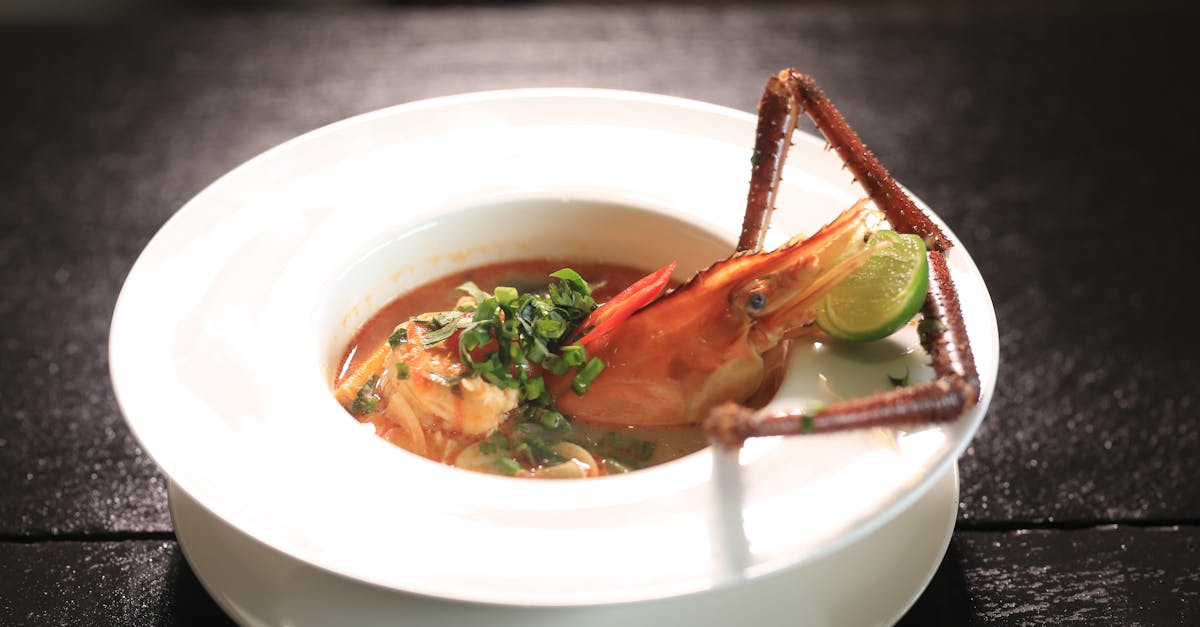10 Tips for Assessing Lobster Freshness

The Role of Movement
Movement is a vital indicator of a lobster's freshness. Fresh lobsters typically display an active swimming response when placed in water. Their movements should be lively, showcasing agility and strength. A lack of movement can suggest a lack of vitality, which might be an indication that the lobster is no longer fresh.
When assessing the activity of lobsters, it's important to observe their behaviour closely. Healthy lobsters will attempt to escape when handled or when in a confined space. A sluggish or lifeless response can often mean the lobster has been stressed or has passed its prime. Engaging with the lobster and noting its reactions can provide valuable insights into its overall freshness.
Observing Lobster Activity
Active lobsters are often signs of freshness. When choosing lobsters, it’s important to observe their movements closely. Healthy lobsters should display a considerable degree of activity, clambering over each other or attempting to escape their confines. Limbs should be fully intact and able to move independently. A sluggish lobster may indicate distress or even decay, which could compromise its quality.
In addition to noting general activity levels, pay attention to how the lobster responds to handling. A lively lobster will respond with vigorous movements when touched or lifted. This response can provide valuable insight into its health and freshness. Conversely, a lack of reaction or an overly relaxed posture could suggest that the lobster is no longer in prime condition. Always choose the most active specimens to ensure a more enjoyable culinary experience.
Checking for Firmness
Firmness is a key indicator of lobster freshness. When you squeeze the lobster's body, it should feel solid and resilient. A fresh lobster exhibits firm flesh, which indicates that it has been kept in optimal conditions. If the meat feels soft or mushy, it may be a sign of deterioration and should be approached with caution.
Another area to assess is the tail. Gently lifting and examining the tail can provide further insights into the lobster's condition. A fresh lobster will have a tail that curls tightly and snaps back into place when released. If the tail remains flaccid or does not return to its original position, it often signifies that the lobster is past its prime. This simple evaluation can be a reliable method for determining overall quality.
Evaluating Meat Consistency
The texture of lobster meat serves as a crucial indicator of its freshness. Fresh lobster should yield a firm consistency that provides resistance when pressed. When assessing the meat, check for any signs of excessive softness or mushiness, which can suggest age or improper storage. An ideal piece of meat will spring back to its original shape when touched, signalling optimal quality.
In addition to texture, the colour can also be a telling factor. Fresh lobster meat tends to have a translucent, glossy appearance. Any discolouration or dullness may indicate degradation. Evaluating these characteristics closely ensures that the lobster you choose will not only be fresh but also offer the best culinary experience possible.
Understanding Water Temperature
Water temperature significantly influences lobster freshness. Lobsters thrive in colder waters, typically below 10 degrees Celsius. When temperatures rise, their metabolism increases, which can lead to faster spoilage. In addition to affecting their health, warmer conditions can compromise the quality of the meat.
Purchasing lobsters directly from cold-water sources often yields better quality. Maintaining a consistent cool temperature during storage is essential to prolonging freshness. Even slight fluctuations can impact the overall quality. Consumers should be aware of the temperature at which lobsters are kept when shopping, as this often indicates how fresh the catch is.
Effects on Lobster Freshness
Water temperature plays a critical role in the overall quality and freshness of lobsters. Optimal water conditions can affect not only the creature's activity level but also its stress levels, which directly impacts its meat quality. Warmer waters may lead to increased stress and a faster metabolism, resulting in a less desirable product. Conversely, cooler temperatures tend to keep lobsters calmer and help preserve their freshness for longer periods.
The temperature at which lobsters are stored post-catch is equally crucial. Keeping lobsters in conditions that mimic their natural habitat can maintain their quality. If lobsters are subjected to fluctuating or overly warm temperatures, they may spoil faster and lose their firm texture. This can lead to a decline in the flavour and overall culinary experience of the lobster when prepared.
FAQS
How can I tell if a lobster is fresh by observing its movement?
Fresh lobsters tend to be active and responsive when handled. If a lobster shows little to no movement, it may be a sign that it is not fresh.
What should I look for when checking the firmness of a lobster?
A fresh lobster should feel firm to the touch, particularly around the claws and tail. If the shell is soft or feels pliable, it could indicate that the lobster is not fresh.
Why is the temperature of the water important for lobster freshness?
Water temperature directly affects a lobster's metabolism and overall health. Lobsters kept in optimal temperatures are less stressed and tend to remain fresher for longer periods.
How can I evaluate the consistency of lobster meat?
Fresh lobster meat should be firm and have a slightly translucent appearance. If the meat is mushy or overly opaque, it may not be fresh.
Is there a specific smell I should be aware of when assessing lobster freshness?
Fresh lobsters should have a mild, ocean-like smell. A strong or unpleasant odour is a clear indicator that the lobster may be spoiled.
Related Links
Roundup of Sustainable Lobster Sourcing MethodsReview of the Best Frozen Lobster Brands
History of Lobster Sourcing Practices
Why Freezing Techniques Matter for Lobster Quality
Why is Traceability Important in Lobster Supply Chains
What are the Benefits of Sourcing Sustainable Lobster